Photo
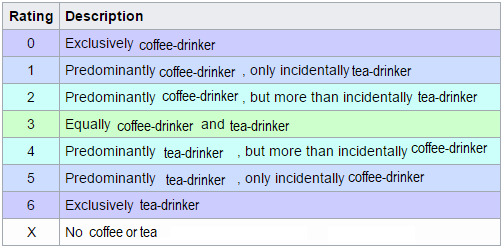
new kinsey scale just dropped tag yourself
I used to be a 5 but now I’m a 3
#4 or maybe 4.5#i have a lot of tea every day#but have (usually decaf) coffee a few times a week as well
85K notes
·
View notes
Text
Tea is a beverage full of contradictions, of possibilities. It’s a liquid made from solids, it can be served both hot and cold, it can both awaken and relax. If a portal through realities did exist, is it really so surprising that it would be tea?
6K notes
·
View notes
Text

[ID: A small black clay teapot and two brown teacups on a bamboo placemat, beside two folded cloths. A round sponge sits under the teapot. In the background are a few bags of tea, a small scale, and an electric kettle.]
I'm on a trip right now, but have still made time to have tea each morning. This is my travelling setup! There are two cups because I'm travelling with a friend who also likes tea from time to time, but more often than not I end up drinking from both teacups myself. Could've brought a larger teacup as well, but that felt like a waste of packing space.
Does anyone else bring tea supplies along on trips? It's nice to be able to enjoy a real tea session while away from home, though of course not every trip is suitable for this - bringing the full complement of equipment isn't ideal when hiking, for instance.
12 notes
·
View notes
Text
Sometimes! Certain types of tea, like most young sheng from Menghai, is naturally bitter no matter how you steep it. That's a pleasant kind of bitterness.
I dislike the bitterness of tea that's been steeped for too long, or in water that's hotter than may be ideal for the leaves' processing style.
Question for everyone! Do you like your tea to be bitter?
18 notes
·
View notes
Text
Been thinking of trying it - I've been travelling and haven't had the energy to post on this blog lately, but still have been drinking tea every day. An app might be a good compromise!
Does anyone here use MyTeaPal? I'd love to have some friends!
21 notes
·
View notes
Text
I've never tried this, but it sounds interesting! Specifically for a sweetened, milky tea.

Why don't more people put marshmallows in their tea? It's delicious!
1 note
·
View note
Text


[Image Description: Two images. First shows dark brown, dusty-looking tea leaves on a halved piece of bamboo. Second shows a small black clay teapot holding wet, crumpled dark brown tea leaves. It sits on a grooved wooden tray beside a white teacup holding opaque, very dark brown tea.]
Been a while since I posted; I've been drinking tea, as always, but not photographing it. I usually have a gongfu session each morning before work, and often just want to sit there and enjoy it without thinking about pictures. :) But I also want to talk about tea, so here we are.
Liu bao is an interesting type of tea. It's a variety of hei cha (fermented 'dark tea') from Guangxi, and is named after the village where it originated. It's quite a strongly-flavoured tea, and some examples taste like straight-up dirt. Others, however, are deliciously creamy and nutty, with a thick texture and long-lasting aftertaste. It sometimes as golden flowers, but not always.
Tea: 2011 Wuzhou Liubao Cha from Yunnan Craft
Origin: Wu Zhou prefecture in China
This is a pretty nice example of liu bao. The wet leaves smell sweet, nutty, and just slightly fungal. The taste is sweet and smooth, with a faint medicinal undertone, but no dirty or fungal notes. The texture is what really stands out to me - it's extremely smooth, and almost oily-feeling in a good way. I steeped it in a jian shui clay pot, which held heat well enough to do it justice.
5 notes
·
View notes
Text
These look amazing! I'll check out the potter. Teaware made of unglazed clay from areas outside China and Japan isn't that thoroughly documented (at least in any English-language sources I've seen), and I'm fascinated by what potential interactions it might have with different teas.
Right now, I like jian shui clay teaware best, but am always looking forward to experimenting with other clays, as well as other materials. I don't know what my ideal teaware would look like precisely - colour, etc. would depend on my mood - but it would be a teapot, probably in the xishi shape, and probably around 80ml.
I'm really interested in teaware made with clay sourced near to where I live. There's so many lesser known clay varieties, it would be interesting to see how these interact with tea. I haven't found much from my state, but there's a potter named Mark Mohler who makes teaware from Georgia (Lizella) clay. Here's a pot from his website. Each pot has a unique face under the lid.
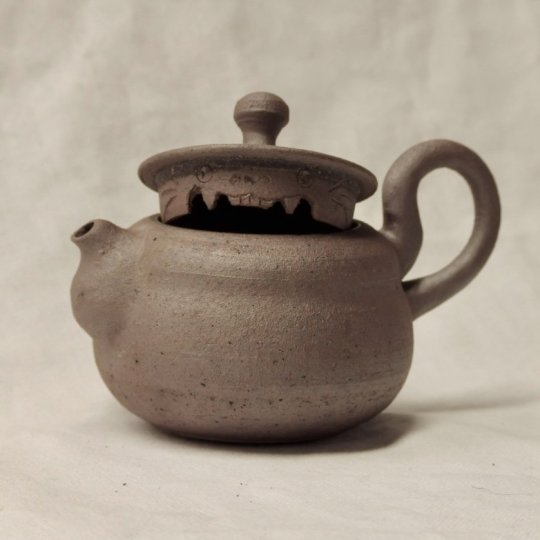

Last week, I ordered an unglazed gaiwan he made. Once it arrives you'll be seeing a lot of it.
81 notes
·
View notes
Text
Do I need more tea? No.
Do I want more tea? Yes.
Can I afford more tea? Yes; samples are pretty cheap.
Do I have space for more tea?
...would my flatmates mind moving out to make room for it?
3 notes
·
View notes
Text
Puerh Storage Experiment
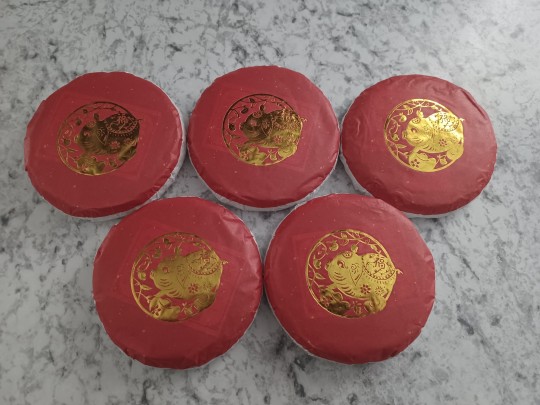
Keep reading
#this is very interesting!#i'm intrigued to see the results (distant as the time for that may be)#tea#sheng puerh#chinese tea#aging
18 notes
·
View notes
Photo
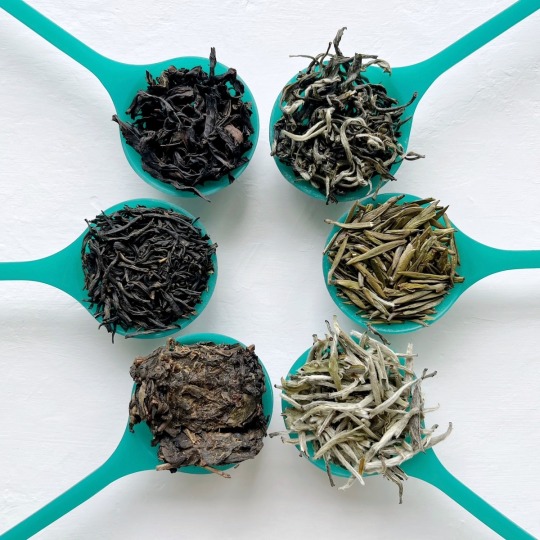
The Different Types of Teas | TEA 101
27 notes
·
View notes
Text
The finest water for tea satisfies the following four elements: it is clear, light, sweet and pure. The first of these can be judged by eye. If the water is cloudy, it is surely low quality. Second, the lightest water is always better for tea. When tasting the water, there should be no foul, bitter or otherwise undesirable flavors. Third, fine water conveys a faint hint of a sweet aftertaste. And last but not least, the water has to be clean and pure, of course.
- Song Huizong, Treatise on Tea
11 notes
·
View notes
Text
Silver teacup time!
Lovely little pure silver tea cup came in today from Crimson Lotus tea. I’m going to review it to the best of my ability! Silver is a super interesting thing when it comes to tea, especially puerh.

The first tea I had was W2T’s Brown Sugar because it’s a tea I’m very familiar with. I was able to sense something different with the tea, however it is slight. The beautiful glittery reflections aren’t the only privilege of drinking from silver. The shou felt much softer, almost silky on the lips when sipping it from the cup. It also stayed hot for much longer than usual. However, Brown Sugar isn’t a bitter tea, and silver is said to help with astringent puerh. So, tomorrow I plan on trying a more bitter raw.
Well, it won’t be tomorrow for you guys. I’ll be posting this all at once.

Second tea I chose is the 2003 Finest Green Big Tree raw puerh from Taiwan Sourcing. Last time I had this tea I enjoyed it quite a bit, but it is astringent. Once again getting that silky feeling with the tea at the opening of the mouth when sipping. Super interesting, it’s definitely the cup doing this. The astringency is lessened in the front of the mouth, but in the back and throat it is just as strong as the last time I had this tea. Tasting it side by side with my typical cup, I can tell the bitterness has been cut oh so slightly.
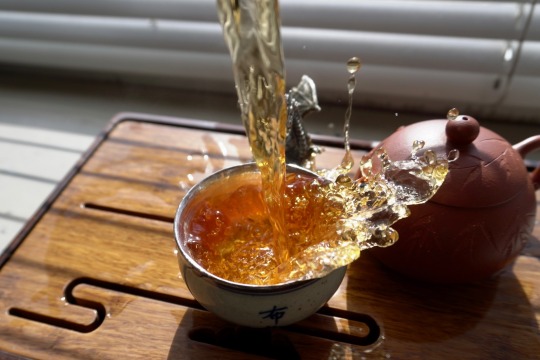
TL;DR
The silver cup is providing me with a different mouth feel than ceramic. This effect is interesting, and worth exploring for tea fanatics. Getting one silver cup is way more affordable than buying a whole silver teapot or kettle. I was in need of a master cup, and I think I found my soul-cup. Plus, that sparkly look is really appealing.

#thanks for the detailed descriptions of your cup's effects on the tea#this is very interesting!#teacup#gif warning#gif
17 notes
·
View notes
Text

eco cha shan lin xi oolong tea
1 note
·
View note
Text
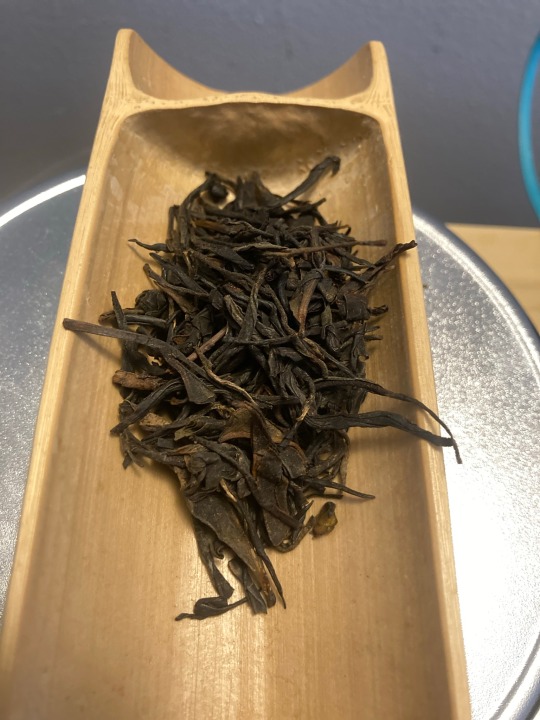

[Image Description: Two images. First shows small, narrow, dry, dark greenish-brown tea leaves in a halved piece of bamboo. Second shows a white teacup of dark orange tea beside a small bronze clay teapot holding brownish green tea leaves. One leaf is open and quite small.]
This is a fun tea! It's zi cha, which is a naturally mutated instance of assamica dehongensis, a wild varietal of camellia. It's a purple tea. This one was processed as a black tea, and can be brewed like one, but the taste is still markedly different from most black teas. I used a nixing clay pot here.
Tea: Purple Needle Black Tea of Jing Mai Mountain from Yunnan Sourcing (March 2020 harvest)
Origin: Jingmai mountain area, Yunnan province, China
It's floral and sweetish, just mildly in both cases. The floral taste reminds me of violets, though the fact that it's a purple tea might have put that into my head. There's a small amount of bitterness present, but no real tannic flavour. The bitterness never dominates the other tastes, but balances them out.
While no one aspect of the taste is especially strong, the combine to create a very pleasant, full-flavoured tea. It can be brewed quite a few times, too.
7 notes
·
View notes
Text
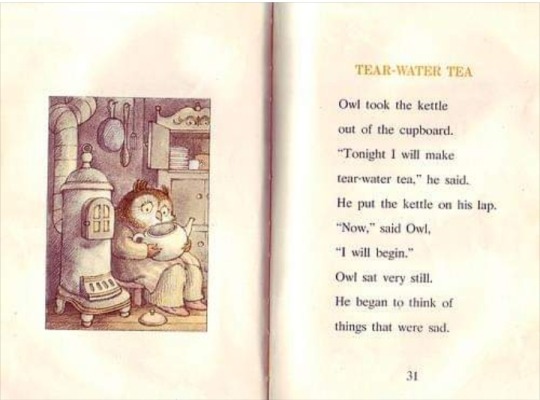
'Owl at Home' by Arnold Lobel
9 notes
·
View notes
